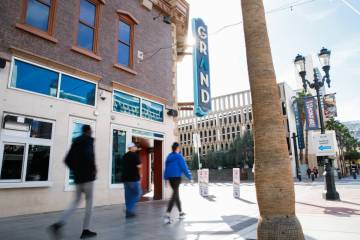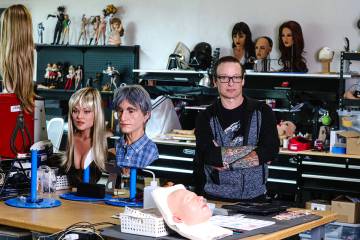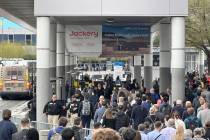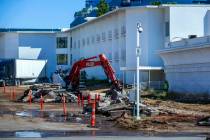US employment report a green light for Feds to raise interest rate
U.S. employment increased strongly in November in a show of the economy's resilience, which most likely paves the way for the Federal Reserve to raise interest rates this month for the first time in nearly a decade.
Nonfarm payrolls rose 211,000 last month, the Labor Department said Friday. September and October data was revised to show 35,000 more jobs than previously reported.
The unemployment rate held at a 7-1/2-year low of 5 percent, even as people returned to the labor force in a sign of confidence in the jobs market. The jobless rate is in a range many Fed officials see as consistent with full employment and has dropped seven-tenths of a percentage point this year.
"The employment report should remove the final doubts about a rate hike at the December meeting. The clear message from the labor market to the Fed is: 'Just do it!'" said Harm Bandholz, chief U.S. economist at UniCredit Research in New York.
The closely watched employment report came a day after Fed Chair Janet Yellen struck an upbeat note on the economy when she testified before lawmakers, describing how it had largely met the criteria the U.S. central bank has set for the Fed's first rate hike since June 2006.
Yellen said the economy needs to create just under 100,000 jobs a month to keep up with growth in the working age population.
The Fed's policy-setting committee will meet Dec. 15-16. Market-based measures of Fed policy expectations assign a probability of 79.1 percent to the central bank's raising interest rates at that meeting, according to the CME Group's FedWatch site.
U.S. Treasury debt prices initially fell on the data, but later reversed losses on news OPEC was raising its output ceiling despite lower oil prices. The dollar rose against a basket of currencies and U.S. stocks were trading higher.
The second month of strong job gains should allay fears the economy has hit a soft patch, after reports showing tepid consumer spending in October and a slowdown in services industry growth in November. Manufacturing contracted in November for the first time in three years.
A strong dollar and spending cuts by energy companies have taken some steam out of the economy. A separate report from the Commerce Department showed the trade deficit widened in October as exports hit a three-year low.
"Payroll gains were despite continued weakness in manufacturing and energy sectors, suggesting little spillover into the rest of the economy," said Samuel Coffin, an economist at UBS in Stamford, Connecticut.
Though wage growth slowed last month, economists say that was mostly payback for October's outsized gains, which were driven by a calendar quirk. Anecdotal evidence, as well as data on labor-related costs, suggest that tightening job market conditions are starting to put upward pressure on wages.
Average hourly earnings increased four cents, or 0.2 percent from 0.4 percent in October. That lowered the year-on-year reading to 2.3 percent from 2.5 percent in October. The average workweek, however, dipped to 34.5 hours from 34.6.
Other labor market measures that Fed officials are eyeing as they consider lifting the benchmark overnight interest rate from near zero were mixed.
The labor force participation rate, or the share of working-age Americans who are employed or at least looking for a job, rose to 62.5 percent from a near 38-year low of 62.4 percent.
But a broad measure of joblessness that includes people who want to work but have given up searching and those working part-time because they cannot find full-time employment rose one-tenth of a percentage point to 9.9 percent. That reflected an increase in part-time workers.
Employment gains in November were broad-based, though manufacturing shed 1,000 positions. Factory employment has declined in three of the last four months.
Manufacturing has been crippled by a strong dollar, efforts by businesses to reduce bloated inventory and spending cuts by energy companies scaling back well drilling and exploration in response to sharply lower oil prices.
Mining purged 11,000 jobs, with oil and gas extraction losing 2,400 positions. Mining employment has dropped by 123,000 since reaching a peak in December 2014. Three quarters of the job losses over this period have been in support activities for mining.
Oilfield services provider Schlumberger this week announced another round of job cuts in addition to 20,000 layoffs already reported this year. The company said it expected the slowdown in drilling activity to continue in 2016.
Construction payrolls increased 46,000 last month, the largest gain since January 2014. Retail jobs rose 30,700 and transportation and warehousing employment rebounded after two straight months of declines.
Professional services added 27,000 jobs and government payrolls increased 14,000 last month.
"It's hard not to like today's reading on the labor market. We can anticipate further improvement ... next year," said Scott Anderson, chief economist at Bank of the West in San Francisco.




























